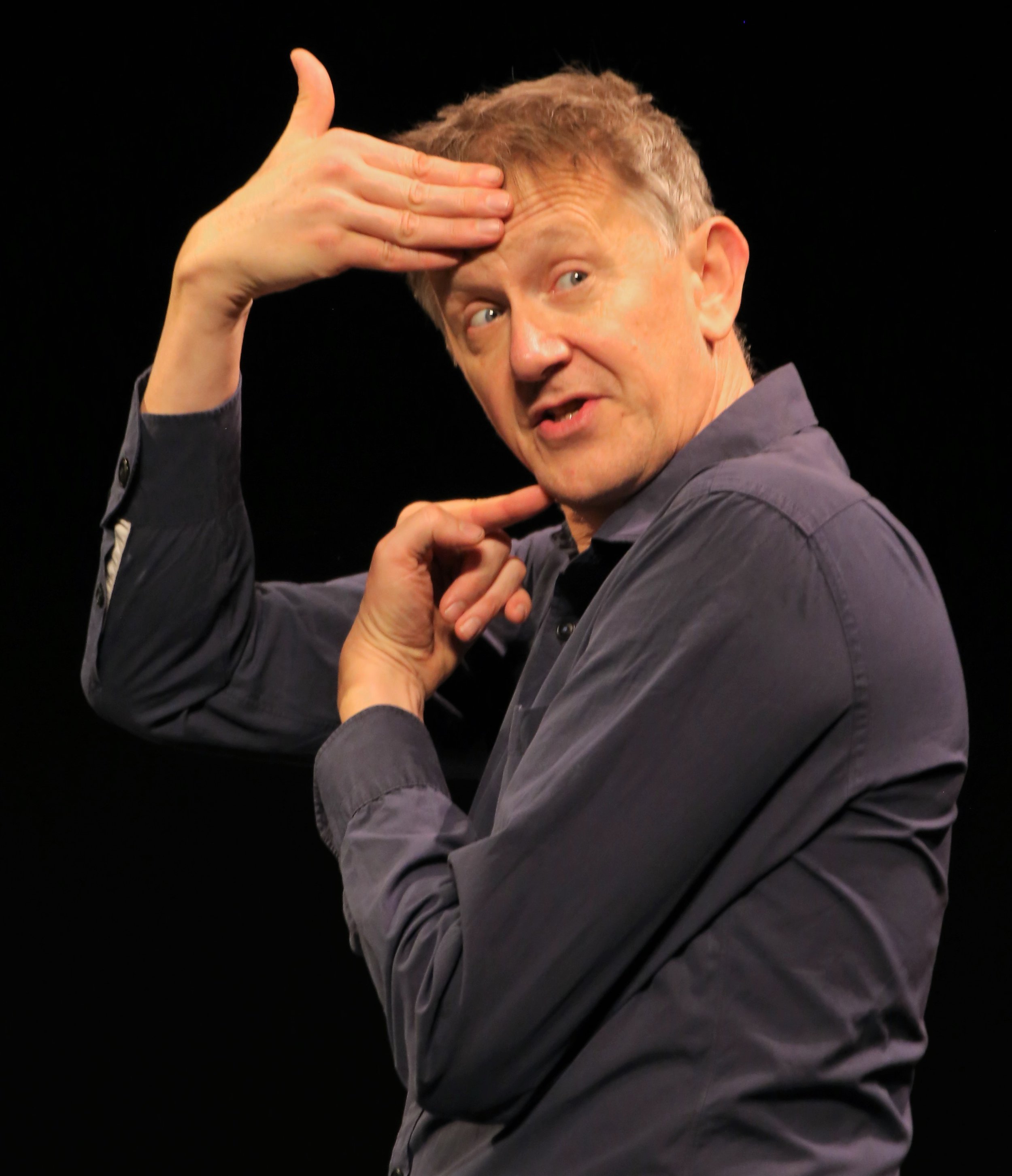The first thing to know about Marcel + The Art of Laughter is that they are two one-acts, not a single show. The first is named for one of the two performers in it: Marcello Magni—although using the French version of Marcello conveniently echoes the great mime Marcel Marceau. The second is a solo performance by Marcel’s compatriot in the first piece (and co-creator of it) Jos Houben, a Belgian. Their show is about clowning and laughter, and it has a particular European sensibility that’s engaging, offbeat and sometimes strangely familiar.
Marcel focuses primarily on Magni, one of the co-founders of Théâtre du Complicité, dressed dapperly as a man about to apply for a document. In the early 20th century one would recognize his figure from silent film comedies: he’s a Chaplinesque Everyman, struggling against bureaucracy. In Marcel his character is apparently an Italian immigrant who needs a document in order to work—there are smatterings of Italian in his dialogue. He mimes arriving in an office building, shaking out his wet umbrella, and climbing a spiral staircase to a bureaucratic office, where he is scheduled to meet for a test for his document. He has battles with the umbrella—don’t we all?—and then pulls out a bowler hat and begins to play around with it. The symbolism of the bowler refers both to Chaplin and to Beckett’s two tramps in Waiting for Godot, of course. (Later on, there’s a brief nod to Harpo Marx.)
Marcello Magni (left) and Jos Houben star in Marcel, the first of two one-act comic pieces at Theater for a New Audience in Brooklyn. Photo by Gerry Goodstein. Top: The actors in another scene from Marcel. Photo by Henry Grossman.
Jos Houben, the tall, no-nonsense functionary who is to administer the test, climbs the staircase, arriving later than Marcel. Marcel has to complete three separate parts. Although there is speaking in the piece, the primary thrust is physical business rendered with precise comic timing. In the testing room is a large semicircle of wood, inclining upward from stage right to left, where it ends at the height of a man’s head. Marcel accidentally breaks the panel at the end of the semicircle, and he tries to hide it, indicating silently to an audience member that he (or perhaps on some nights she) should put the pieces between his knees and close them so nobody will see the damage.
Marcel’s round-faced, meek, bewildered figure stands in contrast to Houben’s tall, hawk-faced, autocratic one, like Mutt and Jeff, or Abbott and Costello. The disparity is a subtle help, but the situation is easily followable and generates plenty of laughter through action.
The test itself is threaded through the play only superficially. More often the comic business just arises spontaneously (though, of course, the pair have worked it out carefully). Marcel, on occasion, lets his knees buckle a bit and adopts Pee-wee Herman’s famous walk; there are also bits involving Marcel’s fear of heights as he ascends the inclining semicircle, and more obvious comedy when he and Houben don a horse’s head and rear to gallop around. Whatever the test is for the approval of Marcel’s application, it surely doesn’t encompass a horse’s costume.
Houben explains how the positioning of a head can produce laughter in The Art of Laughter, a one -man show that fills the bill in Marcel + The Art of Laughter. Photo by Gerry Goodstein.
The end has some unexpected poignancy, as Marcel, in spite of a fear of heights, reaches the top of the incline to retrieve a prize—a cane wrapped in paper. The cane, too, echoes that of Chaplin, of course. And there’s a segment of unexpected poignancy involving a crescent moon, confetti and a sense of yearning.
The second half has Houben on stage alone. As he explains, this solo performance grew out of a master class in comedy he taught. Yet although it has academic underpinnings, there’s plenty of laughter as Houben demonstrates the ways to evoke comedy. If magicians are notoriously reluctant to divulge their tricks, Houben is the opposite. He explains the way double takes work and the best way to walk like a drunk. He enlists a willing audience member so he can demonstrate tripping. He expounds on reactions, and the way the amount of time—too soon, too quick, too late—can be adjusted to produce a comic effect.
Frankly, any description of what he does, which includes imitations of a chicken and a cow, is going to sound far drier than the grin-filled result. Both men are connoisseurs at what makes an audience laugh, and the whole production is both informative and full of delights.
The Théâtre des Bouffes du Nord production of Marcel + The Art of Laughter runs through Nov. 19 at the Polonsky Shakespeare Center (262 Ashland Place, Brooklyn). Evening performances are at 7:30 p.m. Tuesday through Friday; matinees are at 2 p.m. Saturday and Sunday. For tickets and information, call OvationTix at 866-811-4111 or visit tfana.org.





